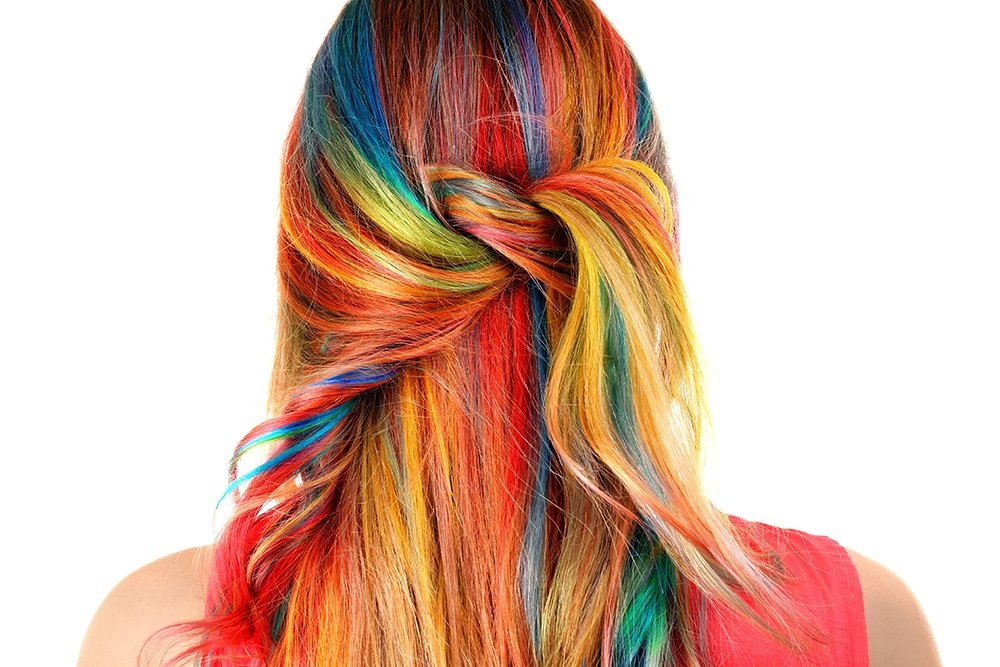
Whether you want to become beautiful and white, or simply want to cover white hair, hair dyeing has become a choice for more and more people to change their image.
However, worries about hair dyeing are also gradually increasing, such as hair dye allergy, carcinogenesis and alopecia.
Are all these rumors true?
How can one dye one’s hair to ensure beauty while not damaging one’s health?
Today we will talk about it in detail.
Hair dyeing does have unsafe factors,
Generally speaking, the risks of dyeing hair may include:
1. Allergic reaction
Hair dye does contain some substances that may have an impact on health. Therefore, after dyeing your hair, be sure to pay attention to whether you feel uncomfortable in what.
For example, lighter conditions such as scalp redness, itching and desquamation, and more serious allergic reactions such as scalp and face edema and long blisters, usually occur within hours to days after hair dyeing.
If the situation is serious or lasts for more than two days, you must go to the dermatological department of the hospital to see a doctor in time.
2. Hair damage
Repeated use of hair dye will cause hair to become more and more slender and fragile, and will be more vulnerable to injury in the later period.
Therefore, hair that often uses hair dye is likely to become dull, lifeless and even lead to pathological alopecia.
3. Heavy metal poisoning
According to < < Cosmetic Hygiene Code > > (2007 Edition): Hair dye allows a certain dose of mercury, lead and arsenic.
Moreover, some hair dyes of poor quality may have higher lead content.
Therefore, long-term repeated hair dyeing may indeed cause chronic lead poisoning.
Before dyeing your hair, you should know the hair dye first.
Common hair dyeing types can be divided into:
- Permanent dyeing of hair; Semi-permanent hair dyeing; Temporary hair dyeing.
When it comes to people’s worries about hair dye, we have to talk about one of the common allergic substances-p-phenylenediamine (PPDA).
PPDA exists in almost all permanent hair dyes, whether cheap or expensive, so many people will have allergic reactions such as scalp itching after dyeing their hair.
Even temporary dyes, such as black hair dyes for gray hair, may contain PPDA or its equivalent.
In addition, hair dyes that claim to be based on plant ingredients [henna] or other pure natural ones are not safe either.
In particular, henna hair dye is actually banned in China and the EU.
Therefore, no matter what type of hair dye, it is recommended to know the composition of hair dye before dyeing.
How to reduce the impact of hair dyeing on the body?
Although hair dyeing may have various effects on the body, it has always been [there are policies at the top and countermeasures at the bottom].
Here are some suggestions before and after hair dyeing, hoping to be helpful to everyone:
1. Before dyeing, fully test to avoid risks
When selecting or purchasing hair dye, one must carefully understand the composition of hair dye. If one is allergic to PPDA, one should not use hair dye containing PPDA.
When preparing hair dye, be sure to wear gloves.
Try to choose previously used products;
One to two days before each dye, you can apply some hair dye to your skin to see if it will cause allergy.

2. During dyeing, the operation shall be strictly in accordance with the specifications.
Do not mix hair dyes with different formulas.
Don’t try to dye eyebrows or eyelashes, which may bring permanent damage to eyes and even blindness.
If there is a wound on the scalp, do not dye your hair.
Wash the hair dye in time according to the instructions, and do not extend the dyeing time without authorization in order to make the color more [firm].
3. After dyeing, repeatedly confirm that cleaning is clean
After dyeing your hair, clean it several times more and don’t let the hair dye remain on your hair.
When dyeing hair, if the hair dye accidentally flows into the eyes, rinse it with water immediately and repeatedly.;
In addition, it is necessary to dye as little as possible, not more than 2 ~ 3 times a year.
Allergic diseases or pregnancy, lactation, etc., try not to dye hair, children also had better not dye hair.
However, once allergy occurs after dyeing hair, the hair dye left on the scalp should be washed off with clear water as soon as possible. In serious cases, the dyed hair should be cut off, and the doctor should seek medical treatment quickly and carry out effective treatment under the guidance of the doctor.
We dye our hair just for fun, but don’t let our bodies go wrong because of carelessness. Our goal is to be beautiful but healthier.
